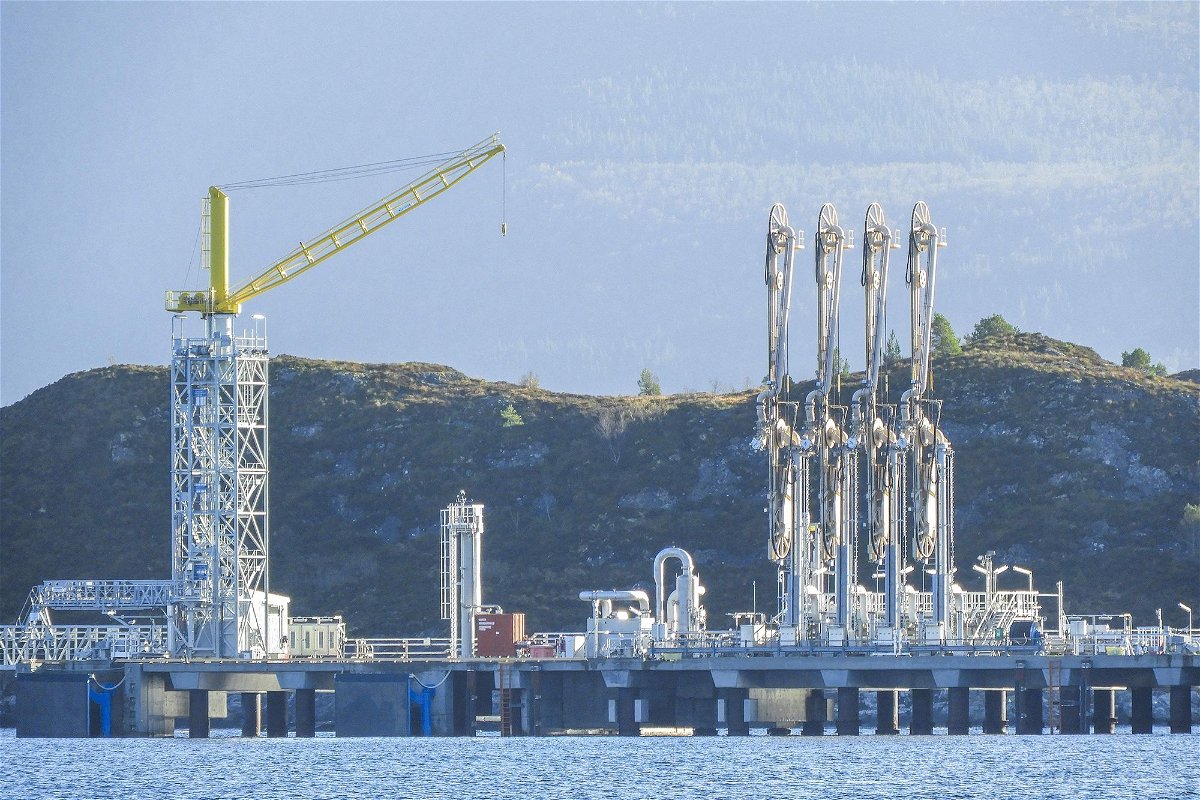European gas prices are soaring again. Full tanks should avert a new energy crisis

Prices have jumped mainly because of longer-than-expected maintenance outages at key gas plants in Norway
By Anna Cooban, CNN
London (CNN) — Europe’s natural gas prices have shot up by more than half so far in June following months of declines, in a troubling reminder of last year’s energy crisis.
Benchmark gas futures prices have risen 52% since the start of this month to hit €35 ($38) per megawatt hour, according to data from the Independent Commodity Intelligence Service (ICIS).
Prices reversed course mainly because of longer-than-expected maintenance outages at key gas plants in Norway, analysts told CNN.
“The recent price rally shows just how sensitive the European market is to disruption,” said Bill Weatherburn, a commodities economist at Capital Economics.
European natural gas prices are still far below their levels last summer, when the continent found itself locked in an energy standoff with Russia following Moscow’s invasion of Ukraine. But the rapid run-up in prices this month shows just how vulnerable the region remains to any supply disruption following the slump in imports from Russia.
Norway’s gas network operator, Gassco, said on its website Tuesday that a planned shutdown at one of its gas processing plants had been extended until July 15. It had been due to come back online on June 21. Two other gas plants will remain offline indefinitely, due to “process problems.”
Last year, Norway replaced Russia as the biggest source of natural gas imports in the European Union, with more than 24% of the market, while Moscow piped 15%.
Europe could be about to lose another source of gas. Prices spiked Thursday following reports that the Netherlands plans to permanently shut its Groningen gas field in October, rather than a year later, which had been an option.
Gas futures reached an intra-day high of almost €50 ($55) per megawatt hour before falling back. That was more than double their level at the start of the month.
A spokesperson for the Dutch government told CNN Friday that it hadn’t yet made a decision about when to close Groningnen.
Once a major supplier of natural gas for Europe, the Netherlands has been winding down production at the onshore field over the past decade because of the risk of earthquakes. The field is one of the biggest in the world but now accounts for just a fraction of Europe’s gas supply. Still, reports that it might close in October appear to have rattled traders.
“The European gas market — and by extension the global gas market — [is] certainly not out of the woods in terms of adequately matching supply with demand,” Tom Marzec-Manser, head of gas analytics at ICIS, told CNN.
He added that an uptick in prices “was always expected” given that futures prices for natural gas deliveries for the next two winters had remained elevated compared with historical norms.
Stronger position
Prices soared to an all-time high of €340 ($372) per megawatt hour in late August as European countries raced to fill their stores ahead of the winter months.
Those storage facilities are now 73% full — a much higher level than the 56% the bloc averaged at the same time of the year over the past five years, according to data from Gas Infrastructure Europe.
“The panic period that we saw last summer… [is] very unlikely to happen again,” Massimo Di Odoardo, a senior gas researcher at consultancy Wood Mackenzie, told CNN.
Record levels of stored gas in Japan and South Korea, combined with a weaker-than-expected recovery in the Chinese economy, also reduce the chance of Europe being forced into another expensive scramble with Asia for imports of liquefied natural gas this year, he said.
Still, it hasn’t taken much to shake traders’ confidence.
“Europe still has to cope with the fact that there’s [little] Russian gas in Europe,” Henning Gloystein, director of energy, climate and resources at Eurasia Group, told CNN. “Unplanned disruptions can still lead to price spikes.”
According to Di Odoardo, the extended shutdown of key gas plants in Norway “could easily shave off another [billion cubic meters] of supply over the next few months.”
“It only really takes 5 bcm less… to make the market a lot tighter.”
The-CNN-Wire
™ & © 2023 Cable News Network, Inc., a Warner Bros. Discovery Company. All rights reserved.